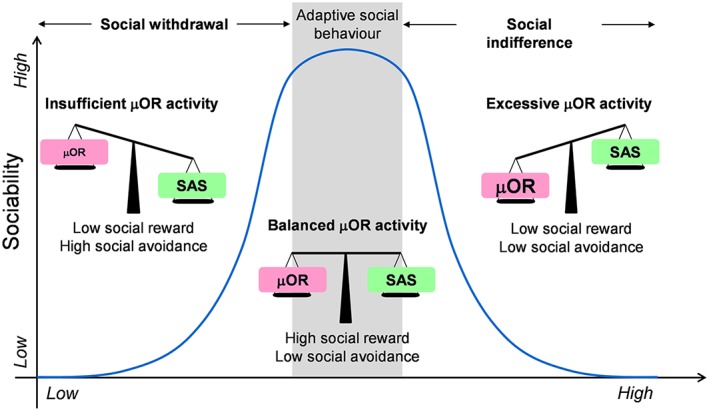Figure 2.

The μ receptor balance model. Activity of μ receptors (μOR) competes with SAS to drive social behaviours. In a narrow window of optimal functioning, μ receptor activity is balanced with SAS to allow adaptive social behaviour. These conditions are ideal to detect social reward (good signal to noise ratio). On the left part of the curve, low μ receptor activity, due to social distress, pharmacological antagonism or genetic anomaly, leads to reduced social reward and/or motivation and leaves the field clear for SAS to elicit social withdrawal (insufficient signal). On the right part of the curve, excessive μ receptor activity, due to intense and/or prolonged exposure to opioid ligands or increased μ receptor expression, saturates the reward system and produces social indifference (excessive noise). Importantly, in this model, blocking μ receptor activity in the case of excessive tone, or stimulating μ receptor when the tone is too low, can restore normal, adaptive, social behaviour.
